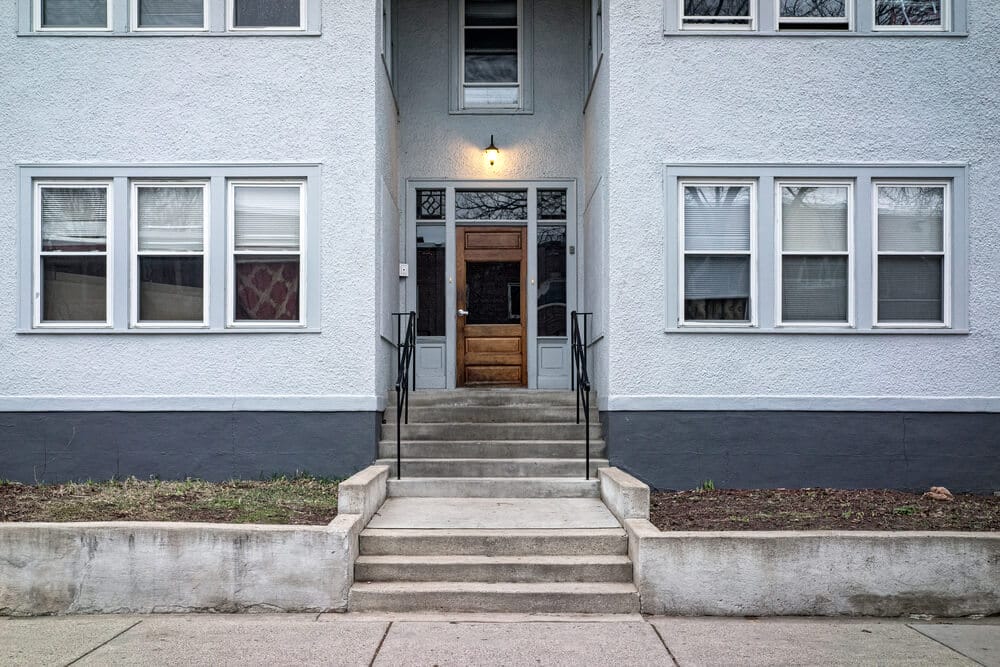If you ask an experienced real estate investor who owns multiple properties how they got started in real estate, don’t be surprised if the response is they first bought a duplex or a fourplex. The reasoning is that the rental income can offset part or all of the financing costs and associated maintenance. It makes a lot of sense.
When you hear the phrase, “let your tenants pay your mortgage for you” what’s happening is the rent payment is more than sufficient to pay for the costs plus some extra money in your pocket.

But the initial hurdle comes with the first unit. When qualifying to buy and finance a duplex or a 3-4 unit property and it’s your first, the lender won’t use the rental income from the other units to help you qualify. Instead, the lender wants you to have at least two years of ownership, evidenced by your own federal income tax returns. If on your Schedule E of your tax returns for the past two years shows rental activity that’s enough evidence to satisfy the lender. On the next purchase of a duplex or 3-4 unit, the lender can use the rental income. This essentially means the owner is not only living in his property “mortgage free” but also pulling in extra cash as income each and every month.
When lenders calculate the income from the property, they will use the amount that appears on the appraisal report. The appraiser will compare market rents for the area and apply those to the subject property. Or, the lender may use the actual rental income from the property if the rental income can be documented with lease agreements signed by the owner and tenants. The total amount is then reduced by 25% to take into consideration any future vacancies.
Duplex vs. Fourplex Financing
There are some basic differences as they relate to a duplex compared to a 3-4 unit property, but not by much. For example, if the borrower occupies one of the units in a duplex many conventional lenders ask for a down payment of at least 15%. Financing a triplex or fourplex and the minimum down payment is 20-25% of the sales price, depending upon the loan program. Down payments for adjustable rate mortgages may also require more down payment. Note that with a conventional loan with less than a 20% down payment there will still be mortgage insurance required. These loans are those underwritten to guidelines established by Fannie Mae and Freddie Mac.
Further, if you live in one of the attached units the property is also eligible for VA and FHA financing. If VA eligible, there is no down payment required and with an FHA loan the down payment is still 3.5% of the sales price and subject to loan limits for the area. If you don’t intend to live in the property government-backed financing such as VA and FHA cannot be used as they are both reserved for owner occupied homes.
If you don’t intend to live in the property and use conventional financing the down payment requirements for a duplex to a fourplex is 25% of the sales price. These are for conforming conventional loan amounts. The maximum high balance loan limit for a duplex in 2017 is $784,700, $948,500 for a triplex and $1,178,750 for a fourplex.

Approval Basics
In general, when financing an owner-occupied multi-unit property lending guidelines will be a bit less stringent compared to a non-owner occupied property. Typically minimum credit scores are higher, there is more down payment required and more cash reserves verified. Cash reserves are defined by the total number of mortgage payments left in a liquid account after closing. The mortgage payment includes the principal and interest portion and a monthly allotment for property taxes, insurance and mortgage insurance where necessary. An investor cash out requirement of 12 months cash reserves is common for most investor loans. If the total house payment, including taxes and insurance is $2,500 per month and the cash reserve requirement is 12 months, the lender would need to verify an additional $30,000 for reserves. This is in addition to the funds needed for a down payment and closing costs.
To verify these funds, lenders will need copies of your most recent bank and investment statements where the funds used to close on the transaction are kept. The deposits appearing on the bank statements should coincide with regular monthly income. Self-employed borrowers will provide both personal as well as business bank statements.
Lenders will also verify your employment and will ask for your most recent pay check stubs covering a 30 day period along with your past two years of W2 forms. For the self-employed borrower, lenders will ask for the most recent two years of federal income tax returns as well as a year-to-date profit and loss statement. Income from year to year should be relatively consistent. Any drop-off from one year to the next that exceeds 20% of the previous year’s business income can indicate potential problems with the business and the lender could turn down the loan application.
Financing a multi-unit property does take a few more steps but in general the loan application is approved in much the same fashion as with any other type of property. The lender reviews income, credit, employment and sufficient funds to close as with most all other loan programs. The primary differences relate to how many attached units there are as well as whether or not the applicant intends to occupy the property as a primary residence or purchases it purely as an investment property, renting out all the units simultaneously.


